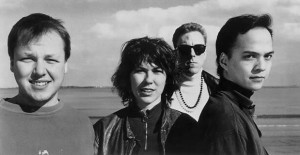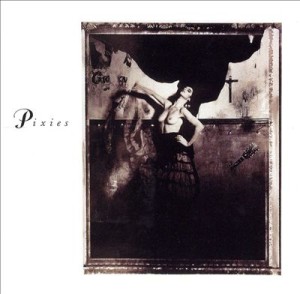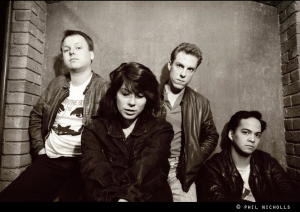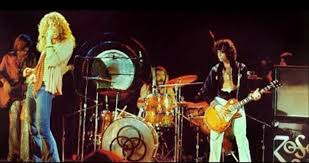Band di rock alternativo statunitense, formatasi a Boston nel 1986, è considerata dalla critica tra le più importanti e influenti del rock alternativo. La loro è una musica piuttosto caotica e distorta, spesso fino all’inverosimile, fatta di melodie scanzonate e ritmi ossessivi.  I Pixies hanno senza dubbio coniato un nuovo e innovativo linguaggio musicale, dal quale hanno attinto ispirazione tante band dei ‘90, tra cui addirittura i Nirvana di Kurt Cobain. La loro è una storia come tante. Nel 1986, il cantante Black Francis e il chitarrista Joey Santiago si conoscono a Porto Rico, dove entrambi studiano. I due decidono di lasciare l’università e di inseguire il loro sogno musicale. Si trasferiscono a Boston e, grazie a un annuncio su un giornale, la band è fatta. Si uniranno a loro la giovane e talentuosa bassista Kim Deal e il batterista David Lovering. I ragazzi iniziano pian piano a spopolare nei locali di Boston con la loro strana ma originale musica, definita noise pop (due terzi di rumore e un terzo di pop). Le loro sono canzoni acide e molto violente, ma nelle quali c’è sempre un nucleo melodico di fondo ben definito. Nel 1987, i Pixies esordiscono con un EP dal titolo Come on Pilgrim.
I Pixies hanno senza dubbio coniato un nuovo e innovativo linguaggio musicale, dal quale hanno attinto ispirazione tante band dei ‘90, tra cui addirittura i Nirvana di Kurt Cobain. La loro è una storia come tante. Nel 1986, il cantante Black Francis e il chitarrista Joey Santiago si conoscono a Porto Rico, dove entrambi studiano. I due decidono di lasciare l’università e di inseguire il loro sogno musicale. Si trasferiscono a Boston e, grazie a un annuncio su un giornale, la band è fatta. Si uniranno a loro la giovane e talentuosa bassista Kim Deal e il batterista David Lovering. I ragazzi iniziano pian piano a spopolare nei locali di Boston con la loro strana ma originale musica, definita noise pop (due terzi di rumore e un terzo di pop). Le loro sono canzoni acide e molto violente, ma nelle quali c’è sempre un nucleo melodico di fondo ben definito. Nel 1987, i Pixies esordiscono con un EP dal titolo Come on Pilgrim. Il lavoro è ancora acerbo, ma il loro stile inizia a delinearsi chiaramente. Nel 1988, invece, c’è la svolta definitiva. La band pubblica il disco Surfer Rosa, Rough Trade (copertina a sinistra), e immediatamente raggiunge il primo posto delle classifiche inglesi di rock indipendente. L’album viene accolto dalla critica musicale con grande entusiasmo. Si parla di ultimo grande capolavoro del post-punk e artisti di caratura internazionale come David Bowie si affrettano ad esprimere il loro apprezzamento per il lavoro della band. Musicalmente, il disco ripropone il sound base del gruppo: un garage rock interpretato in maniera personalissima, in quanto stravolto da riff di chitarra distorta, ritmi spasmodici, urla isteriche ma unite sempre a una melodia di base, che addolcisce il tutto, creando un’atmosfera eterea e infernale a un tempo, confondendo e stordendo l’ascoltatore che si trova in balia di una musica stralunata e quanto mai originale. Il disco parte in quarta con Bone Machine (ascolta), una canzone ferocissima dominata da dissonanze ed effetti ossessivi. La foga e la tensione diventano, poi, sempre più esagitate e lo si sente in pezzi di chiara ispirazione punk come Something against you e Broken face (ascolta), canzoni nevrotiche e veloci. Poi la tensione si smorza e i quattro ragazzi di Boston virano verso un sound meno caotico e veloce, leggermente più melodico, ma dal forte impatto psicologico, come nella canzone River Euprhrates e in Gigantic, la ballata firmata dalla bassista Kim Deal che veste i panni di songwirter. La musica di Gigantic (ascolta) è molto lineare ma dal forte impatto emotivo: su una semplice linea di basso, accompagnata dalla batteria, si innestano le chitarre, mentre la voce della bassista crea una delicatissima linea melodica.
Il lavoro è ancora acerbo, ma il loro stile inizia a delinearsi chiaramente. Nel 1988, invece, c’è la svolta definitiva. La band pubblica il disco Surfer Rosa, Rough Trade (copertina a sinistra), e immediatamente raggiunge il primo posto delle classifiche inglesi di rock indipendente. L’album viene accolto dalla critica musicale con grande entusiasmo. Si parla di ultimo grande capolavoro del post-punk e artisti di caratura internazionale come David Bowie si affrettano ad esprimere il loro apprezzamento per il lavoro della band. Musicalmente, il disco ripropone il sound base del gruppo: un garage rock interpretato in maniera personalissima, in quanto stravolto da riff di chitarra distorta, ritmi spasmodici, urla isteriche ma unite sempre a una melodia di base, che addolcisce il tutto, creando un’atmosfera eterea e infernale a un tempo, confondendo e stordendo l’ascoltatore che si trova in balia di una musica stralunata e quanto mai originale. Il disco parte in quarta con Bone Machine (ascolta), una canzone ferocissima dominata da dissonanze ed effetti ossessivi. La foga e la tensione diventano, poi, sempre più esagitate e lo si sente in pezzi di chiara ispirazione punk come Something against you e Broken face (ascolta), canzoni nevrotiche e veloci. Poi la tensione si smorza e i quattro ragazzi di Boston virano verso un sound meno caotico e veloce, leggermente più melodico, ma dal forte impatto psicologico, come nella canzone River Euprhrates e in Gigantic, la ballata firmata dalla bassista Kim Deal che veste i panni di songwirter. La musica di Gigantic (ascolta) è molto lineare ma dal forte impatto emotivo: su una semplice linea di basso, accompagnata dalla batteria, si innestano le chitarre, mentre la voce della bassista crea una delicatissima linea melodica.  Ma il pezzo in assoluto più travolgente del disco è Where is my mind (ascolta): una melodia tremendamente acida, ossessiva e delirante, una sessione ritmica molto cadenzata, lenta ma inesorabile, e un testo surreale concorrono a creare la canzone perfetta, destinata a divenire uno degli inni per eccellenza dei Pixies e a far parte della colonna sonora dell’immortale capolavoro del cinema Fight Club. Surfer Rosa è un disco sorprendentemente innovativo, dalle infinite influenze e in cui domina una tensione di fondo, quasi snervante. Un disco con cui i Pixies hanno coniato un nuovo modo di fare rock, destinato a divenire (un po’ come è successo per i Sonic Youth) una inesauribile miniera di ispirazione per tante band degli anni ‘90. Un disco assolutamente da ascoltare per capire le successive evoluzioni della musica rock e gli anni Novanta.
Ma il pezzo in assoluto più travolgente del disco è Where is my mind (ascolta): una melodia tremendamente acida, ossessiva e delirante, una sessione ritmica molto cadenzata, lenta ma inesorabile, e un testo surreale concorrono a creare la canzone perfetta, destinata a divenire uno degli inni per eccellenza dei Pixies e a far parte della colonna sonora dell’immortale capolavoro del cinema Fight Club. Surfer Rosa è un disco sorprendentemente innovativo, dalle infinite influenze e in cui domina una tensione di fondo, quasi snervante. Un disco con cui i Pixies hanno coniato un nuovo modo di fare rock, destinato a divenire (un po’ come è successo per i Sonic Youth) una inesauribile miniera di ispirazione per tante band degli anni ‘90. Un disco assolutamente da ascoltare per capire le successive evoluzioni della musica rock e gli anni Novanta.
Pier Luigi Tizzano



